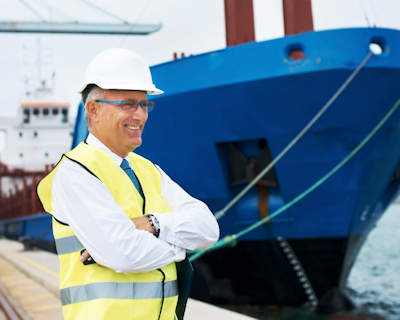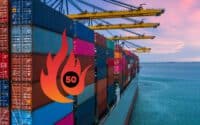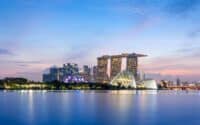Learning from the Past: A Deep Dive into Major Maritime Accidents & Their Lasting Industry Impact

Maritime safety has always been paramount, but it has often been a journey of enlightenment marked by incidents that have reshaped our understanding of the sea and the ships we sail. By delving deep into past accidents, we gain invaluable insights. These lessons from history are not just reminders of the perils of the sea but also guideposts that illuminate our path to a safer maritime future. Each accident, though tragic, offers the industry a chance to evolve, to ensure that similar mistakes are never repeated.
* Please send feedback/suggestions to editor @ shipuniverse.com
Case Studies
1. The Exxon Valdez Oil Spill (1989)
- Background: On March 24, 1989, the Exxon Valdez, an oil tanker, struck Prince William Sound’s Bligh Reef in Alaska. The incident led to one of the most devastating human-made environmental disasters ever to occur at sea. Almost 11 million gallons of crude oil spilled into the pristine waters, spreading across 1,300 miles of coastline.
- Immediate Aftermath: The environmental devastation was immediate and evident. Thousands of sea birds, hundreds of seals, and countless other marine life forms perished in the toxic onslaught. Local fishing industries, dependent on the richness of the Sound, faced colossal losses. The cleanup process took years and cost billions, with Exxon paying out significant amounts in compensation and fines.
- Investigation Insights: The official investigation revealed multiple factors that contributed to the disaster. While the immediate cause was the ship straying off course, other issues like inadequate crew training, possible impairment of the ship’s captain, and a delayed response to the spill exacerbated the situation.
2. The MV Dona Paz Tragedy (1987)
- Background: In a tragic collision, on December 20, 1987, the passenger ferry MV Dona Paz collided with the oil tanker MT Vector in the Tablas Strait, Philippines. The collision resulted in the MT Vector’s cargo igniting, leading to a massive fire that engulfed both vessels. MV Dona Paz was severely overcrowded, carrying more than twice its official capacity.
- Immediate Aftermath: The tragedy claimed the lives of over 4,300 people, marking it as the deadliest peacetime maritime disaster in history. The sheer magnitude of the loss was overwhelming for the local communities and the nation at large.
- Investigation Insights: The official inquiry into the disaster highlighted a series of oversights and failures. MT Vector was found to be operating without a license, had no qualified master or chief mate, and had faulty navigational aids. On the other hand, MV Dona Paz’s overloading and the lack of an official passenger manifest added to the catastrophe’s magnitude.
Part 2: Insights & Evolution – How Past Incidents Reshaped the Maritime World
Case Studies (Second Half)
1. The Costa Concordia Disaster (2012)
- Background: On January 13, 2012, the Italian cruise ship Costa Concordia struck an underwater rock off Isola del Giglio. The ship, carrying over 4,000 passengers and crew, suffered a 50-meter gash on the port side, leading to its capsizing.
- Immediate Aftermath: 32 lives were tragically lost. The wreck posed a significant environmental threat due to the potential for oil and fuel leaks. The salvage operation was one of the largest, most intricate, and costliest in maritime history.
- Investigation Insights: The investigation spotlighted several factors contributing to the disaster. Chief among them was the captain’s decision to deviate from the ship’s computer-programmed route to perform a ‘salute’ – a dangerously close sail-past. Inadequate evacuation procedures and poor crisis management further compounded the tragedy.
2. The Sewol Ferry Sinking (2014)
- Background: On April 16, 2014, the South Korean ferry MV Sewol capsized while en route to Jeju Island. Overloading and illegal modifications to the vessel were among the primary causes.
- Immediate Aftermath: Of the 476 onboard, tragically, 304 passengers and crew members died. Many were students on a school trip. The disaster prompted nationwide grief and outrage.
- Investigation Insights: Investigations revealed that the ship’s cargo had been poorly secured, and the ballast water was inadequately managed, making the vessel unstable. The crew’s inadequate response, with delays in evacuation orders, worsened the tragedy. Regulatory lapses and corrupt practices also came under scrutiny.
Safety Evolution
Both the Costa Concordia and Sewol disasters, along with many others, brought to the fore the need for a paradigm shift in maritime safety. These tragedies resulted in:
- Stricter Regulatory Oversight: International bodies like the International Maritime Organization (IMO) intensified efforts to tighten regulations, ensuring that vessels adhere to safety standards.
- Enhanced Crew Training: The importance of crisis management, quick decision-making, and evacuation training for crew members became paramount. Simulated emergency drills became more frequent and intensive.
- Ship Design & Modifications: There was a renewed emphasis on ship design, focusing on stability and safety. Unauthorized vessel modifications came under stricter scrutiny, with significant penalties for violations.
The Role of Technology
Technological advancements emerged as beacons of hope:
- Advanced Navigation Systems: State-of-the-art navigational tools, including AI-powered systems, ensure safer routes, real-time hazard identification, and collision avoidance.
- Remote Monitoring & IoT: Sensors placed throughout vessels relay real-time data on ship health, enabling predictive maintenance and averting potential mechanical failures.
- Simulation & Virtual Reality: For training purposes, virtual reality creates realistic emergency scenarios, ensuring crews are better prepared for real-life crises.
In the face of these tragedies, the maritime industry’s commitment to evolving, learning, and improving stands firm. Each incident, while a grim reminder of the dangers at sea, also provides a roadmap to a safer, more secure maritime future.
Part 3: Towards Safer Seas – The Way Forward in Maritime Safety
The maritime world has borne witness to incidents that changed its course. These events, somber as they were, offered lessons that became stepping stones towards a safer marine future. As the industry gears up to face the challenges of tomorrow, it does so with an emphasis on collaboration, innovation, and foresight.
Industry Collaboration
The vastness of the world’s oceans is rivaled only by the complexity of its maritime operations. No single entity can hope to secure this vast frontier alone. Here lies the power of collaboration.
- Unified Safety Standards: Organizations like the International Maritime Organization (IMO) work tirelessly to draft safety regulations. But the real magic happens when nations, corporations, and mariners come together to implement these universally, ensuring a consistent safety standard across the globe.
- Sharing is Caring: Data about near-miss incidents, minor mishaps, and even routine operations can offer invaluable insights. By pooling this data and analyzing it collectively, the industry can unearth patterns and trends, spotlighting areas of concern before they escalate.
- Joint Drills & Exercises: Regular joint drills among nations, especially in crucial sea routes, can prepare teams for coordinated emergency responses, refining protocols and enhancing communication.
Proactive Measures
Reactivity, waiting for an incident to dictate our next move, is a strategy of the past. The industry is increasingly adopting a forward-thinking mindset.
- Predictive Analytics: By harnessing vast amounts of data through IoT devices and analyzing them using advanced algorithms, the industry can predict potential hazards, from equipment failures to unsafe weather patterns.
- Safety Culture: Beyond the technology and regulations, there’s a rising emphasis on nurturing a safety-first culture. Encouraging reporting of all irregularities, no matter how minor, and rewarding preventive actions, builds an environment where safety becomes second nature.
- Continuous Learning: The industry realizes that the sea, ever-mysterious, always has lessons to offer. Regular training sessions, updated courses, and an emphasis on learning from every journey ensures that mariners are always at the top of their game.
The journey of the maritime industry has been marked by triumphant innovations, tragic setbacks, and resilient comebacks. As we sail into the future, the goal remains clear: ensuring that every voyage is a safe one. It’s a shared responsibility, one that the industry shoulders with pride, commitment, and unwavering dedication. For in the quest for safer seas, the maritime world doesn’t just look at the horizon; it looks beyond it, constantly charting a course towards excellence.

Do you have a Maritime Product or Service that may be of interest to Shipowners? Tell us about it here!
Do you have feedback or insights? Please reach out to editor @ shipuniverse.com



